Both Antelope and Deer which belong to the order Artiodactyla are captivating animals recognized for their suppleness and flexibility. Although they have a lot in common as herbivores and hooves, they have distinct traits which distinguish them.
From physical characteristics to behavior, this short study aims to clarify the distinct differences between antelopes as well as deer, allowing an insight into the wide variety of wildlife that inhabits our planet.
Antelope
An antelope is a herbivorous mammal belonging to the family Bovidae and is characterized by its slender build, hooved feet, and often, distinctive horns. Antelopes are primarily found in Africa and parts of Asia, but some species have also adapted to various habitats around the world.
They are known for their agility, speed, and the diversity of species that vary in size, coloration, and horn structure. Antelopes play a crucial role in ecosystems as herbivores, contributing to the balance of plant populations and serving as prey for carnivorous animals.
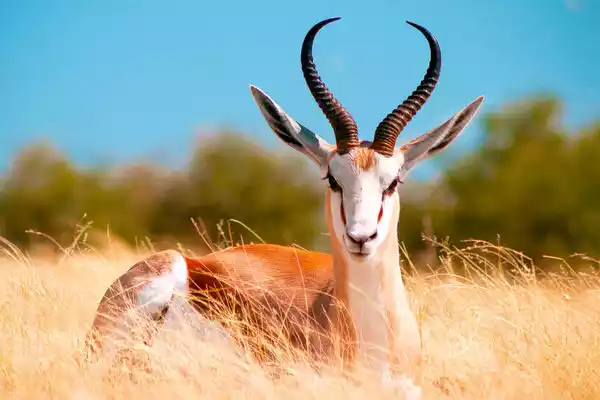
Physical Features of Antelope
- Typically, antelopes have a lean and agile physique.
- Like other members of the Bovidae family, antelopes have cloven hooves.
- Most antelopes have permanent horns, which are not shed annually. The size and structure of horns vary among species.
- Antelopes exhibit a diverse range of coat colors and often have camouflage patterns suited to their habitats.
- Antelope species vary in size, with some being relatively small while others can be larger.
- Known for their speed and agility, antelopes have evolved to navigate open landscapes efficiently.
Deer
Deer are herbivorous mammals belonging to the family Cervidae, characterized by their cloven hooves and typically branched antlers, though not all species have antlers. They are widely distributed across various ecosystems in North and South America, Europe, Asia, and parts of Africa.
Deer exhibit a range of sizes, from the smaller species like the muntjac to the larger ones such as the moose and elk. These animals play important roles in ecosystems by influencing vegetation dynamics through their browsing activities.
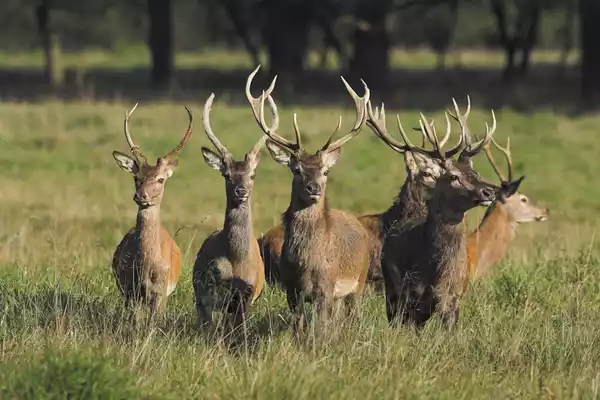
Deer are also significant in cultural, symbolic, and economic contexts, with some species being sought after for their venison, hides, and antlers.
Physical Features of Deer
- Like all members of the Cervidae family, deer have cloven hooves.
- Most male deer (bucks) grow antlers, which are branched structures. Antlers are shed and regrown annually.
- Deer display a variety of coat colors and patterns, often adapted to their surroundings. The coloration may also change seasonally.
- Deer species vary in size, ranging from small species like the muntjac to large ones like the moose and elk.
- Deer are adapted for browsing in forested environments, with features like a mobile, elongated neck for reaching vegetation.
- Deer are highly adaptable and can thrive in diverse habitats, including forests, grasslands, and mountainous regions.
- Bucks typically have more robust and complex antlers used in rituals and competitions during the rutting season.
Comparison chart: Antelope vs Deer
Here’s a comparison chart highlighting key differences between antelopes and deer:
| Characteristic | Antelope | Deer |
|---|---|---|
| Taxonomy and Family | Family Bovidae | Family Cervidae |
| Geographical Distribution | Mainly Africa and parts of Asia | Global distribution (North America, Europe, Asia, Africa, South America) |
| Physical Characteristics | Slender build, varied sizes | Cloven hooves, diverse sizes, typically antlers (but not always) |
| Horns/Antlers | Permanent, not shed annually | Antlers shed and regrow annually (in most species) |
| Coat Color and Patterns | Varied, often with camouflage patterns | Diverse coloration, seasonal changes |
| Social Structure | Group behavior, herds | Varies (solitary to herds depending on species) |
| Mating Behavior | Varied rituals, typically polygamous | Rutting season, males compete for mates |
| Diet and Feeding Habits | Herbivorous, grazing in open areas | Herbivorous, browsing in forested areas |
| Adaptations to Environment | Speed and agility, defensive mechanisms | Adaptations for forested environments, antipredator strategies |
| Conservation Status | Threatened in some regions | Varies by species, some face conservation challenges |
| Human Interaction | Hunting impact, cultural significance | Hunting for venison, economic importance |
Which is faster antelope or deer?
In general, antelopes are often considered faster runners than deer. Antelopes, particularly those adapted to open grasslands, have evolved for speed and agility as a primary defense mechanism against predators. They can reach impressive speeds, with some species capable of running at over 50 miles per hour (80 kilometers per hour).
Deer, on the other hand, are also swift runners but may not match the top speeds of some antelope species. The specific speed of a deer depends on the species, with variations between white-tailed deer, mule deer, elk, and others. Generally, deer are known for their ability to navigate through wooded areas with agility, making use of their environment for cover and protection.
Geographic Distribution of Antelope and Deer
Antelope: Antelopes occur mostly in Africa and some species are also found in parts of Asia. They’re well-adapted to various ecosystems, from grasslands and open savannas to mountainous and desert regions. Some of the most well-known antelope species are springbok, impala, and wildebeest.
Deer: Deer is a species with a global distribution and can be present on almost every continent. They are found in diverse habitats which include North as well as South America, Europe, Asia, and a portion of Africa.
Deer of different species have adjusted to different ecosystems, ranging from the forests that cover North America to the open grasslands of Africa. Common species include white-tailed deer, red deer, and elk.
While antelopes are mostly found in Africa and areas of Asia Deer are found in greater spread and are found in various habitats across the globe.
Behavior and Social Structure: Antelope vs Deer
Antelope: Antelopes display a range of social patterns and behaviors differing across species. A large number of antelope species have herds that vary from small groups of family members to large-scale gatherings.
The social structure usually has a male-female, a female, and their offspring. Antelopes can be seen engaging in elaborate courtship rituals and displays during mating seasons. The group behavior of antelopes helps to protect against predators. In addition, the herds are usually directed by mature females.
deer: They exhibit a variety of social patterns that range from solitary to more social behaviors based on species. White-tailed deer, for example, are known for their solitude, and others, such as the elk, usually make up larger groups.
In the rutting season, male deer engage in competitive actions to win mating rights, which include vocalizations, displays, and sometimes physical battles. Female deer might form smaller groups with their offspring to provide extra security.
While antelopes generally create herds that are led by males who are dominant deer species, they can also display a variety of social patterns that range from solitary to more sociable behaviors dependent on the species.
Diet and Feeding Habits of Antelope
Antelopes are herbivores with a diet primarily consisting of grasses and vegetation. Their feeding habits are adapted to open landscapes, where they use their specialized dentition to graze on a variety of plants.
Antelopes are often well-suited to extract nutrients from grasses, and their digestive systems are efficient in processing fibrous plant material. Some antelope species have also evolved to consume leaves, shrubs, and other available vegetation in their respective habitats.
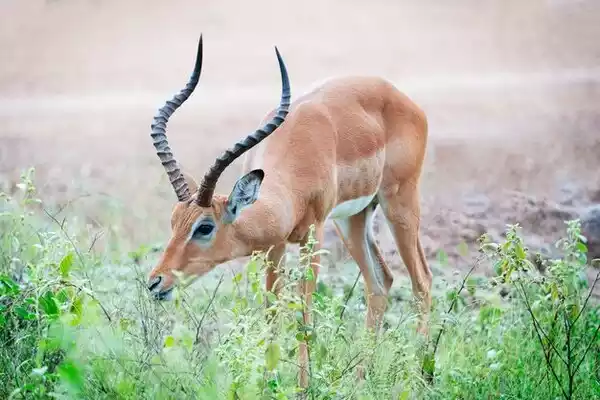
The ability to thrive on a herbivorous diet is a key adaptation that allows antelopes to play a crucial role in maintaining ecosystem balance through grazing activities.
Diet and Feeding Habits of Deer
Deer are herbivores with a diet that typically includes grasses, leaves, and twigs. They are well-adapted to browsing in forested environments, using their cloven hooves to navigate and feed on vegetation.
While some deer, like the white-tailed deer, are primarily grazers that feed on grasses in open areas, others, such as the mule deer, may prefer browsing in wooded regions. Deer are known for their selective feeding habits, and their diets can vary based on factors such as season and habitat.
Water intake is usually obtained from the moisture content in their food, though they may also drink from water sources when available. Overall, deer play a crucial role in shaping ecosystems through their feeding behaviors and herbivorous diets.
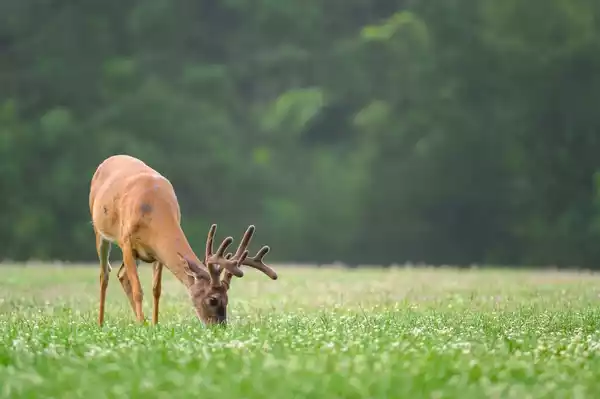
Adaptations to the Environment
Antelopes have developed a variety of adaptations that allow them to flourish in a variety of habitats. One of the most notable adaptations is their agility and speed which is an important defense for predators living in open terrain.
Furthermore, a lot of antelope species are effective in camouflaging through the color of their coats and patterns, which allows them to be concealed in a shady or bushesy environment.
Horns that remain permanent, as seen in the majority of antelope species are used as a method for defense as well as a tool to establish dominance within their social networks.
Additionally, antelopes have developed specific dentitions that are suited to eating grasses, which contributes to their diet of herbivores. These adaptations allow the antelope to survive in a wide range of ecosystems ranging from sprawling grasslands to mountainous areas.
Hunting and Conservation
Hunting is a major factor for both the lives of antelopes as well as deer, which affects their population and the ecosystems they inhabit. Although hunting has been an established practice for survival and reasons of culture it can pose challenges to the protection of the species.
Hunting for sport, habitat loss, and poaching could threaten the antelope populations as well as deer. Conservation efforts are vital in ensuring a balance between human and animal needs while conserving the species.
The use of sustainable hunting techniques, habitat protection, and programs for wildlife management aid in the long-term well-being of deer and antelopes, making sure that they will be around for generations to come while aiding local economies and cultural practices.
Popular Misconceptions
Popular misconceptions about antelopes and deer often arise from cultural myths and limited understanding of these animals. One common misconception is that all deer have antlers. In reality, antlers are typically found on male deer, while females of some species, like reindeer, also grow them.
Another misconception is that all antelopes are swift runners. While many antelopes are indeed known for their speed, not all species share this characteristic. Additionally, there’s a misunderstanding that deer are exclusively found in forests, whereas various species inhabit diverse environments beyond wooded areas.
Dispelling these misconceptions encourages a more accurate and informed appreciation of the diverse traits and behaviors of antelopes and deer in the wild.
What is the largest antelope in the world?
The biggest antelope in this world is known as known as the Giant Eland ( Taurotragus derbianus). It is native to the woodlands and grasslands in central Africa The Giant Eland can be described as a stunning and enormous species of antelope.
Male Giant Eland can reach more than six feet (1.8 meters) tall when standing on their shoulders and weigh anywhere from 1,000 and 220 pounds (450 to 900 kgs). They are renowned for their distinctive horns, which are spiral-shaped can grow to an impressive length, and are found both in males and females.
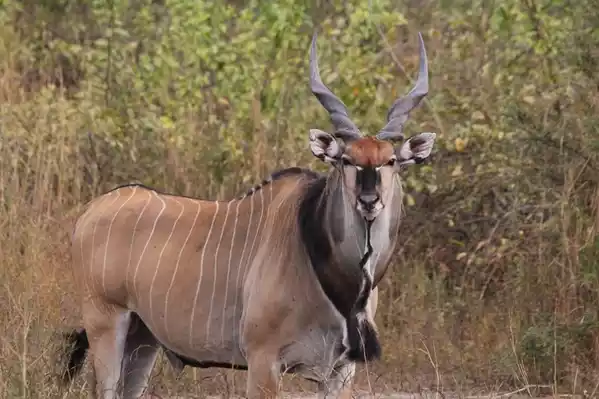
They are also known as the Giant Eland and are considered to be one of the most stunning antelope species in terms of both dimensions and appearance.
The Final word
Examining the distinctions between antelopes and deer shows a fascinating range of behavior and adaptations in these herbivore mammals.
While antelopes display the ability to move with ease, diverse social structures, as well as unique horn characteristics, deer display different antler growth patterns in addition to browsing-related adaptations and the ability to spread across the globe.
Knowing these differences can lead to a greater understanding of the diverse wildlife habitat. Since both are facing challenges due to habitat loss and hunting conservation efforts are crucial in ensuring the survival of these species and maintaining the delicate balance they provide to the ecosystems around the world.
Acknowledging the truth over misinformation improves our understanding of the amazing creatures they inhabit and highlights the importance of responsible coexistence as well as conservation methods.
